|
|
 |
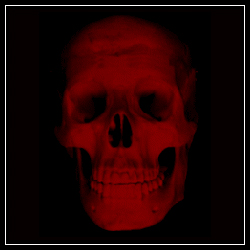
|
 |
Dusted Features
In honor of Halloween, Dusted staffers rattle off some of their favorite spooky tunes.
|
|
|
 |
Ghost Songs - Our Favorite Halloween Tunes
Jason Bivins:
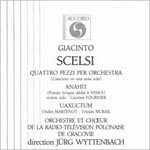
Giacinto Scelsi - “Quattro Pezzi”
A lot of music that purports to be “scary” relies heavily on the affects of fright – a sudden scherzo, the tritone, or howls of despair, for example. While such devices can indeed be ominous or chilling, they seem minor compared to the late Italian composer Giacinto Scelsi’s “Quattro Pezzi” (Four Pieces, each on one note). This piece creates huge oscillations and reverberations from an acoustic palette (it can be performed by solo instrument or by orchestra) that builds from a single note or pitch. Scelsi was fascinated by the energy, presence, and potential of single notes, their pitch bent, articulation changed, durations stretched and decaying. And this piece is probably the best realization of the composer’s interests. The first version I heard was for brass alone, and the huge fullness of the sound blew me away like few other things have. It seemed eternal, frightening, a music of the void, and it made me feel very insignificant. Though other pieces (like George Crumb’s “Black Angels”) may be more jarring, or others (like anything by Khanate) bleaker or (like Galas) more blasphemous, nothing has ever been quite as sonically frightening as Scelsi. The dynamics are eldritch and otherworldly; the timbres are intense, as the notes stack and decay and morph weirdly; and the relentless moan of the piece is always unsettling. There is no cheap sepulchral vibe here, only the endless iterations of pure sound in black space.
Emerson Dameron:
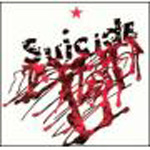
Suicide – “Frankie Teardrop”
Of all the musicians who grossed out Lester Bangs, few have weathered worse than Alan Vega and Martin Rev. But when they first crashed the self-defeating fashion show that was NYC punk circa ’78, they were the scariest action in town, with the most oppressively minimalist music, the most fearlessly unhinged vocalist, and the most purely nihilistic worldview. I was still shitting my diapers in ’78; when I first heard the ten-minute murder ballad “Frankie Teardrop” in my high school buddy’s Dodge Charger, it was ’95, it was late at night, and I nearly shit my pants. The song’s protag slaughters his family in what must’ve been a futile effort not to get sucked into the droning black hole of the synth track. As the textual violence escalates, Vega lets off a scream that would shatter the windshield on the Popemobile. It remains one of the most terrifying, riveting, absurd things I’ve ever heard. I felt better immediately.
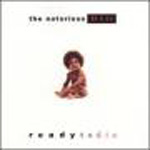
The Notorious B.I.G. – “Suicidal Thoughts”
Nowadays, MCs can get all gooey and sensitive without getting shot. But in 1994, “keeping it real” meant sociopathic lyrical callousness and an incalculable bodycount. Even Ice Cube had descended to cynical thuggin’-by-numbers. The Notorious B.I.G.’s debut Ready To Die had its share of thrill-killings and uncommitted sex, but he also brought the sort of self-effacing humor and emotional depth that restored some of hip-hop’s narrative potential for the forthcoming generation. Oh, and he also kills himself at the end of his record. As the sparse, spooky final track fizzles out, Ready To Die’s cinematic arc touches down with a gunshot and Biggie’s exasperated friend screaming into a telephone with no one left to hear him. Through his blunt delivery, couplets such as “Crime after crime, from drugs to extortion / I know my mother wish she got a fuckin’ abortion” sound silly, but as with any weirdly phrased threat, “Suicidal Thoughts” made the reality of Big’s self-destructive streak much more disturbing.
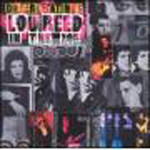
Lou Reed – “Kill Your Sons”
There were plenty of reasons to be disturbed by Lou Reed’s wretched, defeated pop record Sally Can’t Dance, but there was only one compelling one, and it was this monotonal play-by-play of electroshock “therapy” and its deadening aftermath. This stands as one of the most honest songs in Lou’s post-Velvets canon, and serves as the ideal introduction to the mortal terror that followed glam-rock’s proud shallowness like a spurned groupie.
Ben Donnelly:
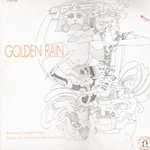
Ketjak - “The Ramayana Monkey Chant” (From Bali: Golden Rain, Nonesuch Records)
"Ketjak" and "cak" are the guttural syllables chanted in rapid-fire bursts for the 20 minutes of the "Ramayana Monkey Chant". It's chanted by a huge circle of bareback Balinese men, as many as 200. The mass of the voices becomes abstract- so percussive they rattle like a room full of manual typewriters. A smaller group howls two-notes that lope in a slower rhythm, sounding a little like the palace guards in The Wizard of Oz. Whenever the rabble quiets down, a growling narrator intones like a drill sergeant. A loud machine under the control of angry monsters, it's the stuff of kids’ nightmares. It does it all with the human voice.
A particularly fierce performance was issued in the 1960s by Nonesuch records. It became a staple of late-night FM deejays looking to fuel freakouts. Twenty years later, a copy of the LP fell into my circle of friends, and we used it for the same purpose. The liner notes read "While the ketjak...is a creation of this century, it is descended from something much more ancient - the trance dance, the dance of exorcism..." It was the most pagan thing I'd ever heard. It struck me as an authentic unearthing of the primal and ceremonial force that Einstürzende Neubauten and the Swans were striving for.
Fellini used it as the sound of a Roman mystery cult in Satyricon, and I've heard it turn up in slasher soundtracks. When I finally found my own copy it still felt like a rarity. Then I ran into a neighbor who'd just returned from several months in Indonesia, searching for imports for his earthy-crunchy shop. Among his finds were a set of cassettes of different monkey chant performances. He played me one, and while it wasn't as tight and mesmerizing as the Nonesuch recording, the case depicted the same circle of men. He'd seen a couple of performances. My dark ritual, it turned out, was part of the usual Bali tourist package. Now that was chilling.
It's right there in the liner notes: "creation of this century...". What the notes from the 1960s don't explain is that it was created as a collaboration between an Indonesian dancer and a German artist living in Bali in the 1930s. So this work which spooked more than Neubauten's "Halber Mensch" was created in a not dissimilar context: the European bohemian looking to disinter the corpse of his unrepressed self, swinging a shovel the formailites of western culture, but not escaping.
Rob Hatch-Miller:
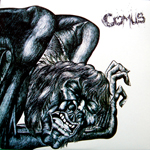
Comus - First Utterance
There's more than one terrifying track on First Utterance. The drawing of a naked and emaciated demonic creature on the cover of Comus' debut album is the perfect visual counterpart to Roger Wootton's deranged tales of madness and murder. The opening track "Diana" describes an eerie scene in which a virtuous young woman is pursued through the woods and raped by a mysterious assailant. The falsetto vocals, staccato violin, dissonant slide guitar and hand percussion give this pagan nightmare an uncannily sinister aura.
Nate Hogan:
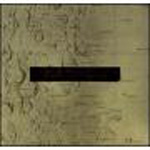
Low - "Sunflower"
This one always sends a chill. The first track on the Duluth trio’s Things We Lost In The Fire strips a boilerplate noir narrative down to its bare essentials and lifts the curtain for the final act. Melancholy chords move fatalistically over a soft, insistent snare as Sparhawk and Parker sketch the story’s arc with a vivid economy. There’s a get-rich scheme gone sour and somebody left holding the bag. Between the lines, I’ve always imagined wet woods, pine needles, sweaty palms, a dirty shovel, a patch of flowers illuminated by the flashbulb of a detective’s camera. By the end, you feel that the dead girl is the only one who got away with anything. Horror is so often about the pursuit, the adrenaline rush that comes with wondering if you’re going to make it out alive. This is a more serene kind of fear––the cold, clammy feeling that it’s too late to take anything back.
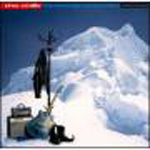
The Chills: - "Pink Frost”
Said to be inspired by a dream that Chills drummer Martyn Bull had about beating his girlfriend to death, this eerie pop single takes up one of Hitchcock’s favorite preoccupations: the possibility of murder without intent or memory. The chiming, reverberating melody evokes a kind of early-AM lucidity––the calm, hyper-awareness that sometimes follows sleep. Martin Phillips lifts the last syllable of every line up in a kind of numbed disbelief (“I want to stop her crying / She’s just lying there dying”) but it’s the interplay with Bull’s drumming that makes this track so incredible. Bull’s insistent playing keeps struggling to puncture Phillips’ gauzy incredulity. Listen once, and then listen again with an ear to the percussion––there’s a moral pulse thumping beneath the detachment and confusion, and it’s terrified.
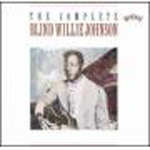
Blind Willie Johnson: - “I Know His Blood Can Make Me Whole”
Unlike most devotional singers, Blind Willie Johnson doesn’t sing like he wants you to give yourself over to Jesus. He sings like he thinks you’re a sinner and you’re going to burn. On “I Know His Blood Can Make Me Whole,” that gruff and gravelly, been-everywhere, seen-everything voice moves a half beat slower than usual, while his fingers shake strangled moans from the bottleneck. On paper, the lyrics read like an enticement to follow: “I was sick and I couldn’t get well…I was a gambler, just like you… I just touched the hem of his garment, I just touched the hem of his garment.” But the way Johnson growls every sin––the way his words mysteriously evanesce as he “touches the garment”––makes you feel like you’re watching him ascend up to heaven from a spot of the ground. It’s enough to scare you straight.
Mason Jones:
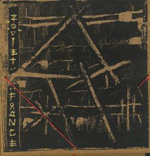
Zoviet France - Mohnomishe
Back in the early 80s when I was busily uncovering the strangest music I could find, I discovered a really unique LP at the local store, by a band I'd never heard of called Zoviet France. The thing was a double-LP sandwiched between two screen-printed masonite boards, tied together with string. It looked clearly like something I'd be into, so I promptly bought it and brought it home. I must admit it didn't smash me upside the head like Non's Blood and Flame did when I unsuspectingly bought that one, but Mohnomishe proved much more subtle and sneaky. Put on late at night, it seemed as though the music caused the lights to dim and shadows to form. I'm actually happy in retrospect that this was before CDs so I had to get up and flip the record every 15 minutes or so. Without those breaks, who knows what effects a constant hour of these creepy sounds might have had. Put this on at the door on Halloween, and you may not have anyone get up the courage to ring the bell...
Jennifer Kelly:
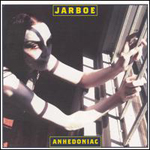
Jarboe - Anhedoniac
Just the photos inside this definitive woman-done-wrong album scare the piss out of me, with Jarboe dead white and emaciated, decked out in minimal leather and clutching desperately at a barred window. She was, by her own account, nearly insane when she wrote these songs, anorexic and suicidal over her break-up with Swans partner Michael Gira. The song is a descent into madness, sung in a crazy, Opheliac, nursery-rhyme cadence, but full of unbearable images like blood pooling in a face of blue and fishes swimming up the birth canal to eat her skull. "Come fill your cup with vile disease/Come and give me what I need," Jarboe wails, late in the cut and it's hard to say if that qualifies as a trick or a treat.
Doug Mosurak:
Rainy Day - “Holocaust” from s/t LP (Serpent Records/Rough Trade, 1984)
Positioned as somewhat of a Paisley Underground counterpart to This Mortal Coil, L.A.’s Rainy Day created one album of hazy, beautiful covers, centered around the efforts of folks from the Bangles, the Rain Parade, Opal, the Dream Syndicate, and the Three O’Clock, among others. At the expense of all the otherwise whimsically gloomy selections on the album, there sits a black hole of emotion and despair right in the middle: a reading of Alex Chilton’s “Holocaust,” done by Kendra Smith and David Roback, which defies comparison, plunging sorrowfully into the canon of despair like few other songs before or since. This usurps the already depressive, world-ending original as one of the most harrowing pop recordings of our time. I can only imagine that the principles involved with its creation had busted out laughing when they were done with recording this one. It’s one of the only responses that could possibly break the tension created by this stark, piano-led rendition, even more bombed-out and desolate than one could possibly imagine. You’ve been warned.
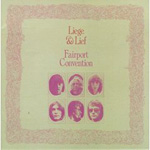
Fairport Convention - “Tam Lin” from Liege & Lief LP (A&M, 1969)
Back in college I had this roommate named Carl, several years older than me and a student of the whole “black lights and speed” philosophy of music. He’s responsible for turning me onto Fairport, and in particular this jewel, a retelling of the legendary Child Ballad of one young maiden’s lurid travels through the Fairie Queen’s forest on Halloween. The crisp recording and busy, almost rushed pace of the lengthy track is perfect for the season, as is the whole of the album that it’s on. But this one’s special to me. It probably will be to you, too.
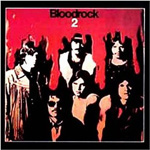
Bloodrock - “D.O.A.” from Bloodrock 2 LP (Capitol, 1970)
Bloodrock were a dramatic, stagey hard rock band from Texas with all the appeal of wet sneakers, but with “D.O.A.,” they proved themselves to be something far, far worse. A melty, moaning dirge that reaches for Sabbath but ends up grasping Richard Harris instead, it’s a spectacular opus about a plane crash, told from the first-person perspective of one of its victims, complete with wailing ambulance sirens and a blowsy bridge in which we’re to believe that he did not, in fact, survive. It's a bummer so big, you could choke on it. It’s also incredibly morbid, and the rest of the band’s fairly pointless career has no real response to it. Surprisingly, this song was somewhat of a hit in its day. It’s a kick in the stones about as big as that “Dear Mr. Jesus” song you tried to forget. Were we ever, as a nation of culture consumers, this bummed out?
Honor Role selected works from Album discography CD (Merge, 1997)
Coral - Altamont in Dub CD (Fistpuppet, 1996)
I am constantly haunted by the music of these two bands, both from Richmond, VA and featuring vocalist Bob Schick’s tormented, needling whine. What started as a hardcore band grew into something grayer than nuclear winter, Honor Role exploring the repressed, introverted side of the music we’d soon call emo through bleakly thrashing means (augmented by some severely thick riffage courtesy of guitarist Pen Rollings). It’s the kind of music that would later inform Slint and Codeine, suitable for dying alone in a filthy apartment in the dead of January. Schick’s later outing in Coral, marks its territory as the most depressive, backbiting, hopeless rock music ever committed to tape, with drops of your own blood. Altamont in Dub was the last release for the stalled Fistpuppet imprint; its title alone should clue you in to what’s in store: a dark, disturbing, intensive reinterpretation of a tragedy. Musically, Altamont is top notch, determinedly metallic, mostly uptempo, and pregnant with deep rhythms, but this is a cursed album that feeds into your insecurities and misgivings, fueling their cold fire but inevitably leaving you assed out once it’s all over. Do you dare find out for yourself?
Alexander Provan:
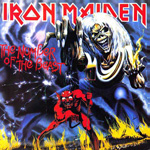
Iron Maiden - “Hallowed Be Thy Name” from The Number of the Beast
“As I walk all my life drifts before me
And though the end is near I’m not sorry
Catch my soul ‘cause its willing to fly away”
–Iron Maiden, “Hallowed Be Thy Name”
King Henry VIII: “Put them in the Iron Maiden.”
Bill and Ted: “Iron Maiden? Excellent!”
The mortal fear of death; the reconciliation of the mortal body and the transcendent soul; the questioning of divinity in light of earthly terror; the litany of monstrosities, mundane and surreal, paraded about on the eve during which, according to the Celtic tradition, the boundary separating the dead from the living at its most tenuous—surely if the 1980s had a St. John the Divine he was embodied by Iron Maiden, his word manifest in the image of the band’s mascot, Eddie, the long-haired Beast featured on t-shirts worldwide. That every teen movie produced between 1981 and 1988 was obliged to include a free spirited nihilist with the Beast emblazoned across his chest only attests to the pervasive influence of Iron Maiden’s ruminations on the point at which life ends and the chasm of eternity opens its jaws, ravenous.
“Hallowed Be Thy Name,” in particular, takes us from the Celtic Samhain, the last day of the light half of the year, to the Christian All Hallow’s Eve, a tradition born from the celebration of dead saints initiated by Pope Boniface IV in 609 while consecrating the Pantheon. Beyond that, violent collisions of power chords and ghastly wails, endless interlocking guitar solos, and the morose bells that inaugurate this contemplation of the narrator’s execution, all herald a brief glimpse at the Rapture.
The narrator recounts awaiting execution and reflecting on the incomprehensibility of one’s own death. After passing through the stages of disbelief, regret, madness, and anger at a seemingly absent God, the he catches a glimpse of redemption, a premonition of the beyond that can only be compared to the visionary achievements of Milton and Dante:
“When you know that your time is close at hand
Maybe then you’ll begin to understand
Life down there is just a strange illusion.”
John predicts that the saints are the only ones who will not worship the beasts whose arrival will initiate the empire of the antichrist. And that empire will surely come: the dead believers will be resurrected, the earth will swell, scab, belch, vomit repeatedly, scrape the mutilated corpses of a thousand iBankers and puss-ridden visages of a thousand Hilary Clintons, tongues still wagging, from that ephemeral domain and send them to meet their makers. That “strange illusion” will be cleared up quite nicely.
It is that encounter between life and death, the fleeting image of existence on earth and the painfully interminable reality awaiting its closure, that defines Halloween. It is this morbidity we must encounter, however well disguised in the form of mummies, slutty nurses, Tinker Bells, sad-eyed child molesters, Hollywood Democrats. What does Iron Maiden teach us? Realize that all has been revealed, that redemption, in the form of the executioner’s blade, is not only an inevitability but a blessing—for those whose faith is true. You can cry out, you can kiss your loved ones, you can write a check to Barak Obama; but by that time, fuck it, you’re already dead.
Adam Strohn:
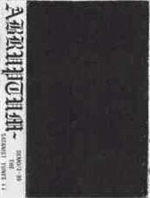
Abruptum - The Satanist Tunes
Mayhem’s Euronymous once called them “the audial presence of pure black evil,” and while that’s certainly hyperbole, there’s definitely something unnerving about Abruptum’s music. The Swedish group, led (and, for a time, consisting only of) an evil midget named It, made black metal that, as the group progressed, existed further and further on the fringes of the metal underground. The Satanist Tunes, the group’s second demo, contains music that’s perhaps not as unhinged or bizarre (or, it must be admitted, as good) as that of some of its successors, but the inclusion of a twenty-minute track seemed too unwieldy for this feature, and the band’s earlier work has a gritty murkiness that enhances its mystery. “Vis Semina Die Hora Dea – Membra Corpora” sums the release up fairly well; noisy, plodding, and menacing. Dispel the temptation to simply pass this track off as goofballs in face-paint, and listen to it alone, in a dark room. According to It, the band’s debut self-titled demo caused a member to quit and immediately join a church upon first hearing the finished product, and while the savvy Dusted listener may not react in such an extreme way, it’s not hard to imagine this music causing some nightmares in the nights to come; dreams of a small man in corpse paint, calling for your soul.
Derek Taylor:
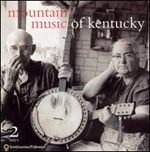
Bill Cornett – “Pretty Polly”
A choice murder ballad of maidenly innocence defiled and destroyed by backwoods lust. Cornett’s ferocious claw hammer banjo and froggy bottom wail bring the harrowing fable home.
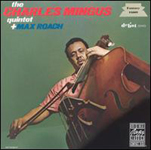
Charles Mingus – “Drums”
Mingus had a fulminating dark side and several of his compositions fit the bill for this feature. This one finds him scaring the collective pants off a crowd at the Café Bohemia circa 1955. “A Foggy Day” and “Pithecanthropus Erectus” from the Atlantic album of the same name are also apposite All Hallow’s Eve tracks.
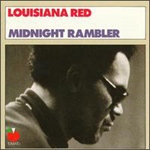
Louisiana Red – “Sweet Blood Call”
Probably the most blatantly brutal and misogynistic blues lyrics I’ve ever heard & curiously at odds with Red’s fairly innocuous fretwork. Not to be played in the presence of girlfriends or spouses.
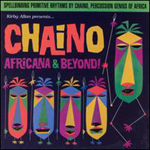
Chaino – “Gone Ape” & “Slave Girl”
This whole disc has value as a shameless piece of antique exploitation exotica. On the first tune, the cognitive dissonance of Chaino’s carnal suspirations and grunts with the light cocktail soul jazz interludes never fails to freak my shit out. The second song blends kitschy Yma Sumac crooning with punctuating S&M whip cracks, perfect for addling the nerves of the parents of prepubescent trick-or-treaters.
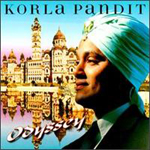
Korla Pandit – “Tale of the Underwater Worshippers”
This one has a nice Vincent Price public access horror hour vibe to it with some killer pitch play from Pandit that reminds me of Sun Ra on Valium. Goes on a bit too long, but it’s still a fun spooky ride.
Evan Woodward:
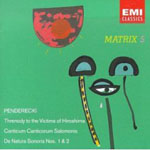
Krzysztof Penderecki - Threnody for the Victims of Hiroshima
A piece of profound disorder, whistling destruction, and horrifyingly infinite shrieks, it's fitting that Penderecki's Threnody for the Victim's of Hiroshima was not penned with the express intent to capture the horrifying tableau of the aftermath of "Little Boy"'s catastrophic detonation. The title was applied after its first performance at the urging of Penderecki's publisher. It seems unlikely that the composer could have summoned such a withering indictment of the sheer immorality of homicide on a previously unimaginable scale, were he to set out to consciously do so. Through liberal use of tone clusters and encouraging his orchestra to use radical non-trad techniques, Penderecki is able to capture this scale, multiplying his 52-piece string section into a furious chorus of thousands of dead and dying. The score plummets to unconscionable depths, then soars with a haunting finale; a sustained dissonance that serves as an indictment to authoritarianisms both Eastern and Western.
Matthew Wuethrich:
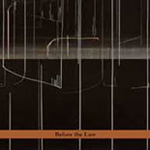
Raz Mesinai - Before the Law (Tzadik)
“The Castle”
Sigmund Freud might have made the subconscious mainstream with his scientific rhetoric, but Franz Kafka made our unseen selves into frightening, unnerving poetry. Long after Freud’s ideas have been turned to dust by the quantitative grind, Kafka will linger at the edges of our dreams, keeping us awake and anxious. His pared-to-the-bone, asymmetrical sketches, composed during insomniac nights, expose us to what we should really be scared of: ourselves and the world we pass through on a daily basis. On his 2001 disc of Kafka-inspired micro-compositions, Mesinai taps into what makes Kafka our collective id. Perhaps most frightening is his work-up of the writer’s unfinished novel, The Castle. The book’s main character is known only as K., and incompleteness and ambiguity haunt every page. Kafka’s style is dry and stubbornly literal, but it also lacks anything specific a reader can cling to. Mesinai evokes this lack of specificity by electronically scrambling instruments we recognize – cymbals, bells, chimes and strings–in ways that reject any notion we may have of how they are usually played. The place we know becomes utterly strange and everyone in it, a stranger.
Ben Yaster:
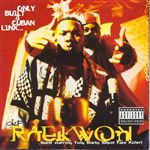
Raekwon - “Ice Cream”
Before RZA discovered horns and Jim Jarmusch, before Ghostface’s abstruse hyperviolence was recognized as laureate material, and before Method Man was representing deodorant and, instead, sporting a bizarro afro and fangs for fronts, Wu-Tang was a genuinely scary group. Raekwon was no exception. “Ice Cream” is, I think, supposed to be romantic—hence, guest Cappachino’s affirmation that he loves his woman “like his dick size”—but is, arguably, the most menacing song any Wu-Tang member has produced, no small feat for a group unrenowned for its warmth. The piano loop, a classic RZA minor riff, is incongruous as an ode for a significant other. It is relentless and lacking any compassion, suggesting the mental orchestrations of a madman rather than the fluttering of the rapper’s hearts. Raekwon, et al. don’t exactly play the part of Romeos either—their over-the-top testosterone puts the “man” in “romance,” but lacks much other feeling, resulting in four minutes wholly cold and unflinching. If this is what infatuation is for Wu-Tang, I would hate to see divorce. Raekwon might be the chef but, ladies, please hide your cutlery.
By Dusted Magazine
|







